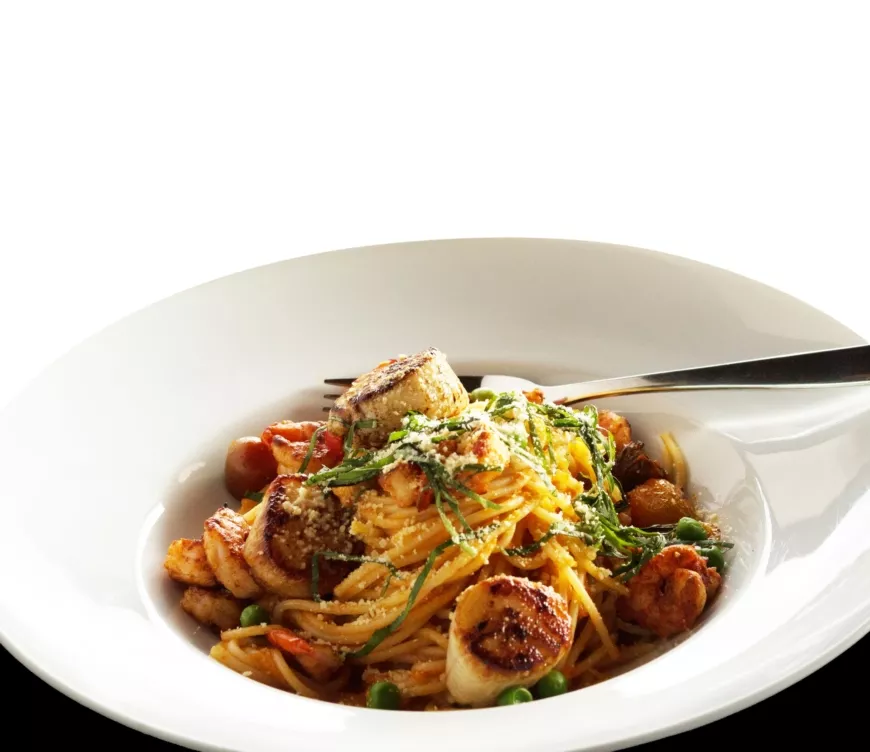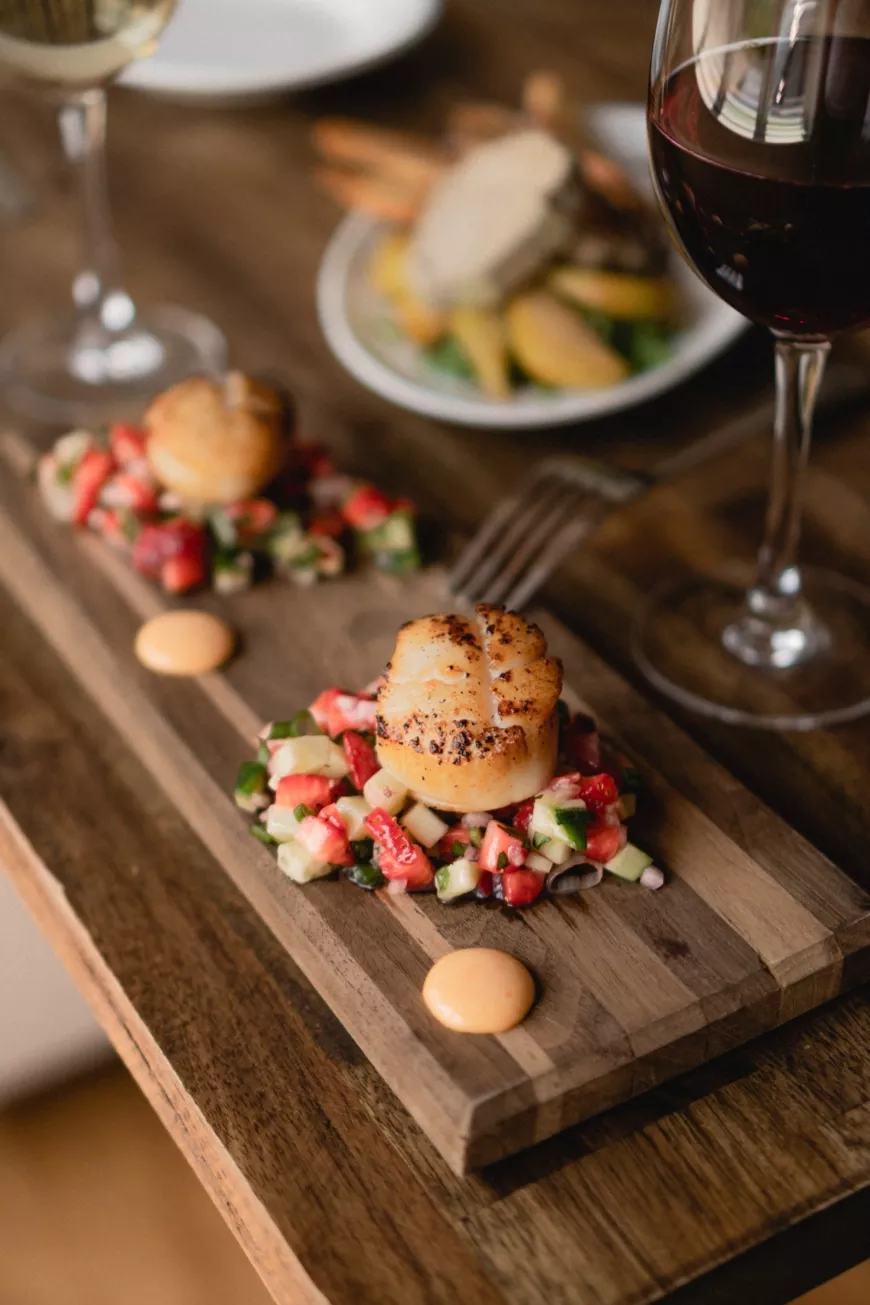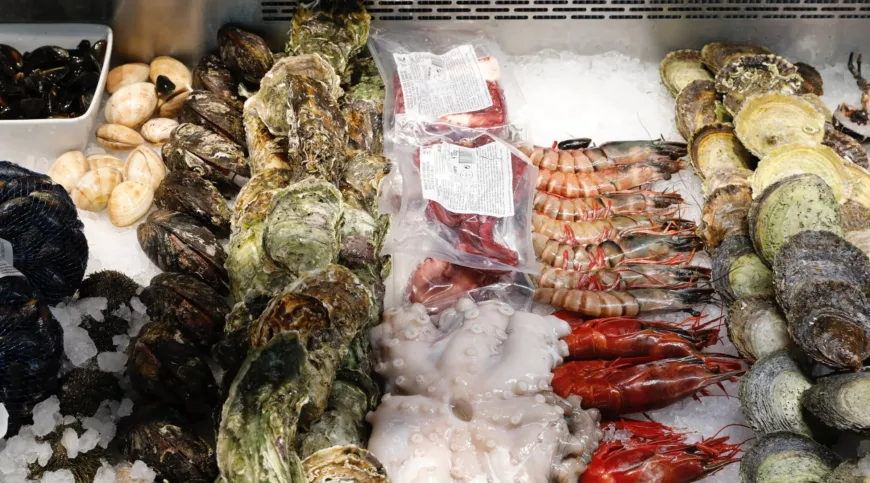If you like seafood 🍤, chances are you’ve seen scallops. They look like small, squishy white circles. You might think they look weird, but they taste delicious. Never tried them? As a fellow seafood lover, let me tell you why I love them 😍.
One reason is their soft, luscious texture. They are very tender. Properly cooked scallops will melt in your mouth like butter, which is often used to cook them. Like lobster, they pair beautifully with butter and lemon, as they have a similar delicate, slightly sweet flavor. However, scallops are more subtle in flavor and have a buttery mouth feel. They are also slightly firmer than lobster. This makes them really heavenly to eat.
Because they lack a strong fishy taste and odor and because they are so tender, even people who dislike seafood often enjoy scallops. They are therefore a popular ingredient in everything from stir fries to pasta dishes 🍝.
 Pinterest
Photo by fran hogan on Unsplash
Pinterest
Photo by fran hogan on Unsplash
While you can use them in recipes that have strong flavors such as a Szechuan stir fry, this can overpower the gentle taste of the main ingredient. A better way to enjoy scallops is with a more mellow flavor profile that enhances their natural qualities.
Many professional chefs simply saute scallops in butter with a touch of garlic until they are barely cooked, then sprinkle with some lemon and salt and serve over bucatini. As far as seasoning, it’s best to go easy on the freshly ground pepper; minced parsley, however, is a nice touch.
Occasionally you will find someone who has had scallops and doesn’t care fort them. Usually this is because of improper cooking techniques.
Scallops can easily be overcooked. When they are, the texture goes from succulent to rubbery. They become like tiny hockey pucks on your plate. Not appetizing 😝!
If you are cooking scallops yourself, the best way to ensure this doesn’t happen is to cook only until the flesh becomes firm and opaque and not a moment longer.
Other tips to cook scallops:
- Make sure the surface of the scallop Is dry before you cook. Otherwise you may not be able to get a nice sear on it. That caramelization adds to the delicious flavor. You can add salt and pepper before you cook, but if you use black pepper, be careful. Too much will overwhelm the sweetness of the delicate meat.
- Melt your butter or heat your oil on medium heat before you add the scallops. Remember, a little bit of butter or oil goes a long way.
- Once you place the scallops in the pan, leave them alone to evenly brown. I like to use a cast iron skillet because I’ve found that gets the best results.
- When you see they are becoming opaque, carefully flip to gently sear the other side.
- Don’t overcook! Remove from the heat as soon as they are medium firm.
These cooking tips are important, as you don’t want to ruin your precious scallops. They are one of the more expensive types of seafood. This is one reason many people have never tried them. However, once you’ve tasted properly cooked scallops, you’ll agree they are worth the price.
This is one reason why scallops are often a perfect date night meal — because they are pricey and taste luxurious, yet are not hard to cook once you know how, they make the perfect meal to serve for a romantic evening.
 Pinterest
Photo by Kamil Kalbarczyk on Unsplash
Pinterest
Photo by Kamil Kalbarczyk on Unsplash
If you decide to serve your scallops with wine for such an occasion, you can use a bit of the same wine in the sauce. Try a crisp, fruity chenin blanc or a dry sparking wine.
To buy scallops, go to the seafood aisle. They are part the phylum Mollusca like mussels, clams and oysters, and, like these other mollusks, they come inside a shell.
 Pinterest
Photo by Georg Eiermann on Unsplash
Pinterest
Photo by Georg Eiermann on Unsplash
While everything inside the shell is theoretically edible, in North America we generally just eat the white muscle which opens and closes the shell. There is also a coral part that is eaten in other parts of the world.
Generally, you will see two varieties in your local store – bay scallops and sea scallops. The sea scallops are larger and can reach 2 inches across. This is the type of scallop I would recommend if you want to pan sear them as I described above.
The bay scallops are smaller. If anything, they are even more sweet than the larger version but they don’t stand up well to pan searing. However, they are delicious baked or grilled.
One yummy way to try them is to put them on skewers with pineapple and green peppers 🍢 and quickly cook on the grill. Serve over rice and sprinkle with lime juice, sea salt and a touch of red pepper.
Finally, if you are fortunate enough to live on the Gulf Coast or along the South Atlantic coast, you might come across calico scallops. This type of scallop pairs particularly well with bacon. However, as with any strong flavor – a little goes a long way when it comes to scallops. You want to enhance, not overwhelm the main ingredient.
In addition to being absolutely delicious, scallops also are good for you. Scallops contain high levels of vitamin B12 as well as being a source of magnesium and potassium. They are also high in omega-3 fatty acids, DHA and EPA. These last three ingredients are critical to preventing cognitive diseases like Alzheimer’s.
To optimize both health benefits and flavor, make sure to choose fresh scallops. How do you know a scallop is fresh? It will appear plump and hold its appearance. It should also be a shiny, creamy white in color. If it’s slightly orange or pink, that’s actually a sign of a particularly healthy and nutritious scallop. On the other hand, avoid those that are a hard, matte white in color!
If you can’t get freshly caught scallops, dry-packed ones are the next best variety. They won’t be quite as delicious, but will still be quite good.
To store your newly purchased scallops, wrap them in damp paper towels and keep them refrigerated. Like all seafood, they are best eaten soon after purchase.
I hope you have found this article useful. Feel free to comment below and leave your own tips and recipes!



